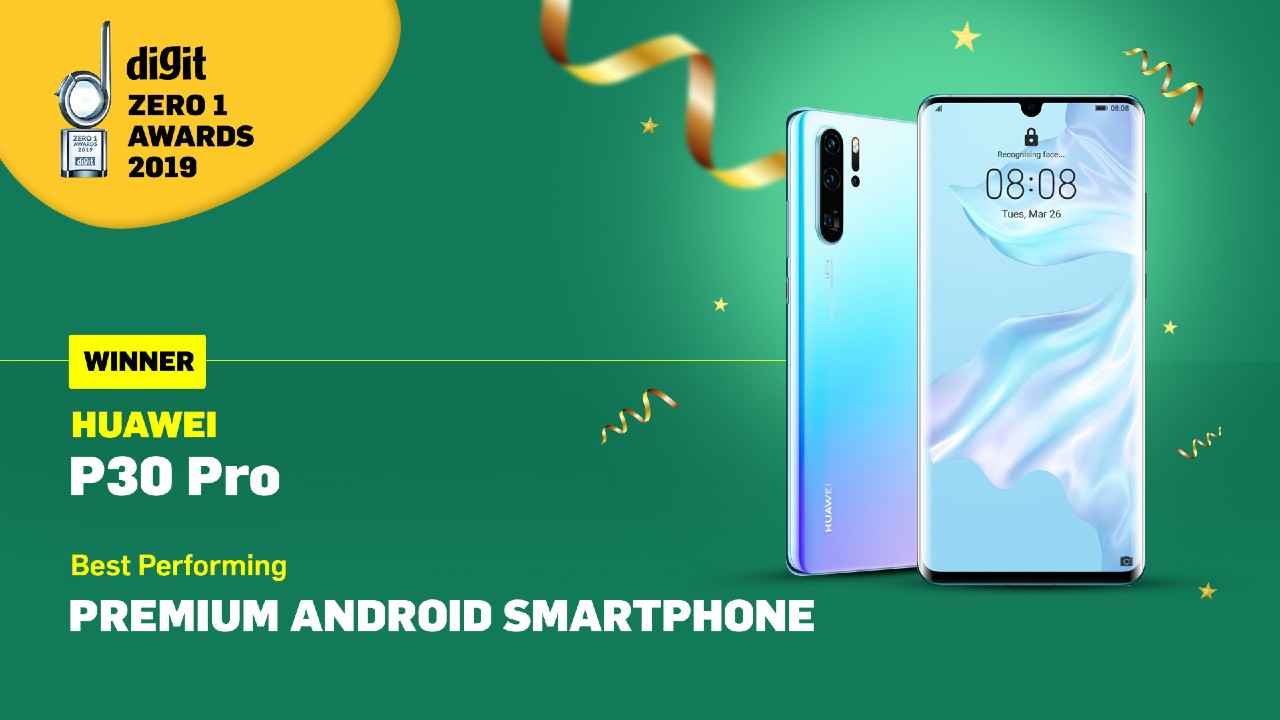

This year a lot transpired in the Android smartphone space. New brands emerged, and some well-established brands transformed. The consumer had a lot more choices in this space as a result. This year, we also saw gaming phones become more common, high refresh rate displays being available in non-gaming phones and the adoption of high-speed UFS 3.0 storage. We also saw the amount of RAM in a phone go all the way up to 12GB. Charging speeds have jumped up as well, as have battery capacities. Given how much has transpired in just this year, we’ve had to step up our testing game. With that in mind, here are our best Android phones for this year.


Huawei had a tough year, but that hasn’t dulled the shine of their products. The Huawei P30 Pro was an undeniably strong contender for the best smartphone award, and based on our testing, did emerge as the winner. The Kirin 980 SoC excels at CPU performance, but loses out to the Samsung on account of the GPU performance. An area where the Huawei P30 Pro gains serious points is in the camera department, thanks to the RYYB sensor and the 5x telephoto lens which allows users to shoot farther than ever before. The battery life is excellent giving us close two days of use. All of this comes together for the Huawei P30 Pro, putting it ahead of all other Premium Android smartphones this year.
Samsung launched the Galaxy Note 10+ with a new Exynos 9825 chipset in India, an SoC that is fabricated using the 7nm process. Samsung packed 12GB of RAM into the Note 10+ and it can take on any task with ease. The Note 10+ shone in various benchmarking tests such as Geekbench 4 and AnTuTu, proving that the new Exynos 9825 wasn’t just a recycled version of the older Exynos 9820. The new S-Pen comes with a host of new features for those who use it. Packing a class-leading display that has a peak brightness of over a 1000nits (when playing back HDR content) and a battery that delivered a consistent life of a day and a half, the Samsung Galaxy Note 10+ made for a reliable and consistent performer. However, it lost out to the Huawei P30 Pro on account of the CPU, camera and battery scores, making the Samsung Galaxy Note 10+ the runner up for the best Premium Android smartphone.
Finally making its way into the big league, the OnePlus 7T Pro is built like a flagship and packs flagship hardware. The main highlights of the phone are the Qualcomm Snapdragon 855+ processor and a display with a 90Hz refresh rate. There’s also 8/12GB of RAM and UFS 3.0 storage, all coming together to help the OnePlus 7T Pro achieve some really high-performance numbers. In some benchmarks, the OnePlus 7T Pro beats all other smartphones, while in some, it manages to stay in the top three brackets. What is undeniable is that the OnePlus 7T Pro, even though not a gaming phone, is a really good smartphone for gaming. It manages to keep the overall temperatures low while delivering maximum possible frame rates, with very good frame rate stability. The battery life is solid and the new Warp Charge is lightning fast. The triple camera setup produces good images, although the camera app suffers from a slight shutter lag. The issue, thankfully, is more software-based than hardware and can be addressed easily. Given the performance to price ratio offered by the OnePlus 7T Pro, it wins our Best Buy recommendation for Android phones.